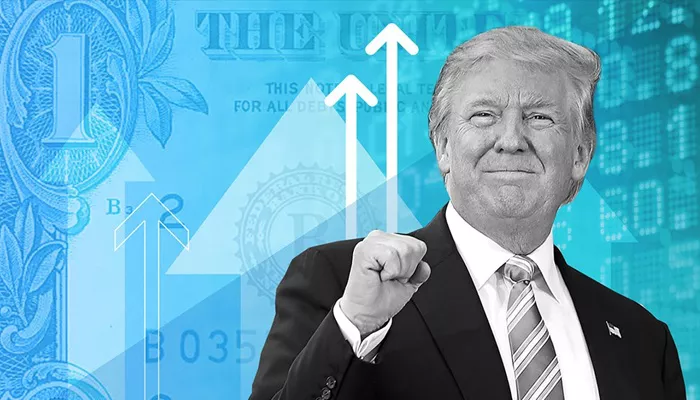Virginia Lee argues that Trump’s economic approach suffers from a critical flaw—an attempt to maintain the dominance of the US dollar in global finance while simultaneously pushing for policies that undermine its strength. The contradiction is grounded in the Triffin dilemma, a theory suggesting that a nation’s reserve currency status (in this case, the US dollar) cannot be maintained alongside a balanced domestic economy. The Triffin dilemma highlights the conflict between the international demand for a currency and the domestic economic needs of the country issuing it. In this context, Trump’s policies exacerbate the imbalance between global monetary dominance and fiscal responsibility.
The Strong Dollar and Its Consequences
One of the central tenets of Trump’s economic strategy is promoting a strong dollar, which he believes signals financial strength and geopolitical dominance. While a stronger dollar can theoretically reduce import costs and attract foreign investment, its long-term impact on the US economy has been problematic. The article outlines how this strong dollar leads to chronic overvaluation, which makes US exports more expensive and less competitive on the global market. This dynamic contributes to widening trade deficits and the decline of American manufacturing industries, particularly in regions that have already been hit hard by deindustrialization. This structural imbalance forces the US to borrow in order to finance consumption and military expansion, which further deepens fiscal challenges.
The Push for Low Interest Rates and Their Risks
Trump’s ambition to keep interest rates low to finance a rising national deficit is another cornerstone of his economic strategy. However, the article points out that these low rates are incompatible with a strong currency. Typically, higher interest rates are needed to attract foreign capital to support the dollar’s value. Trump’s attempt to suppress rates, particularly in the face of growing deficits, poses significant risks. Investors may start to lose confidence in US sovereign debt, leading countries like China and Japan to reduce their exposure to US debt. This could trigger a debt crisis as markets demand higher yields to offset the perceived risk of investing in US debt.
Tariffs and Protectionism: Short-Term Measures, Long-Term Consequences
In an effort to offset the adverse effects of a strong dollar, Trump has resorted to tariffs—an aggressive trade tool that has been used with mixed success. The article critiques this approach, noting that while tariffs may appear to offer immediate relief for domestic industries, they ultimately lead to higher consumer prices and can provoke retaliatory measures from trading partners, such as China. The use of tariffs disrupts global supply chains and creates economic volatility, undermining the broader goal of achieving economic stability.
Risks of Unilateral Currency Interventions
Trump’s flirtation with unilateral currency interventions, including proposals to penalize foreign holders of US debt, could further destabilize global financial systems. By weakening the dollar to boost exports, these interventions may lead to capital flight and market dislocation. This strategy risks eroding global trust in US economic policy, which is a key component of maintaining the dollar’s reserve-currency status. Instead of reinforcing American leadership, such measures could destabilize the system and invite calls for alternative financial arrangements.
The Growing Threat to the Dollar’s Global Role
The article concludes with a discussion of the potential long-term erosion of the dollar’s global role. China’s fiscal prudence, industrial planning, and increasing use of the renminbi in bilateral agreements are seen as signs of a shifting global economic landscape. With the rise of alternative monetary systems such as digital currencies and blockchain, the dollar’s supremacy is gradually being challenged. In contrast to the US’s erratic economic policies, China’s steady and disciplined approach to financial management positions it as a credible alternative to the dollar’s dominance.
The Path Forward: A Multipolar Financial Order
In conclusion, Virginia Lee advocates for a rational shift in US economic policy—one that prioritizes fiscal responsibility, multilateral cooperation, and recognition of emerging economic powers. Rather than clinging to outdated models of economic dominance, the US would benefit from engaging in structural reforms that allow for a more multipolar financial order. The future of global finance, Lee argues, lies in cooperation and a shift away from unilateral approaches that risk alienating key stakeholders.

